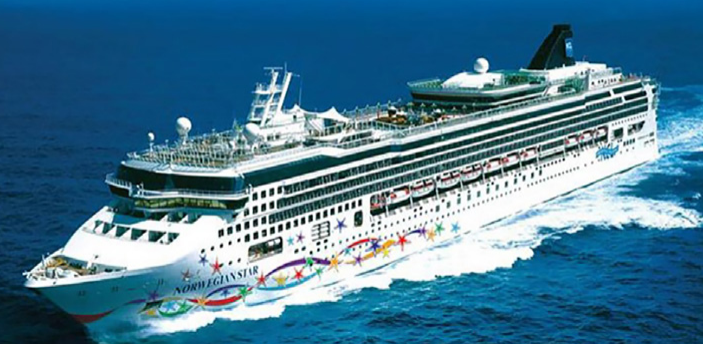The ATSB issued an investigation report on the loss of propulsion on the cruise ship ‘Norwegian Star’ in February 2017. The ship was operating only with the starboard propulsor, due to a recent failure of the port propulsion unit. The report revealed that the processes for monitoring the condition of the brushless exciter units’ electrical insulation were ineffective in detecting deterioration prior to unit failure.
The incident
On 9 February 2017, the passenger cruise ship ‘Norwegian Star’ departed Melbourne, Australia, on a scheduled cruise to Dunedin, New Zealand. There were 2,113 passengers and 1,017 crew onboard. On departure, the starboard propulsion unit was operational following its recent repair, and the port propulsion unit was under repair following its failure on 24 January. This meant that the ship was operating only with the starboard propulsor.
At about 0134 on 10 February, Norwegian Star was about 22 NM south-west of Cape Liptrap, Victoria, Australia, when the starboard propulsion unit failed. Propulsion could not be restored and tugs were deployed from Melbourne to tow the ship back to Melbourne. The ship arrived back without further incident at about midnight on 11 February.
Findings
- The ATSB found that Norwegian Star lost function of its starboard propulsion as a result of the failure of the recently repaired starboard exciter. The configuration of the exciter unit had been modified as part of its repair, and the unit failed as a result of an error in the design of the modification. Insufficient clearance had been provided to allow for movement and thermal expansion of components during the unit’s operation. This error was not detected during the design, installation and trialing of the modified exciter unit.
- The need for the repair of the starboard exciter unit had followed its failure on 11 December 2016. The failure of the unit in its original (as-built) configuration, and the subsequent failure of the original port exciter unit on 24 January, were both probably due to a breakdown in electrical insulation. Processes for the monitoring of exciter unit condition were ineffective in detecting deterioration prior to unit failure.
- The ship operator’s decision to sail from Melbourne with only the starboard propulsion unit did not breach any regulatory requirement and was based on confidence in the reliability of the repaired starboard unit. While the repaired exciter was of proven design concept, the detailed design specific to this propulsion system application had not previously been used in-service.
Conclusions
- The processes for monitoring the condition of the brushless exciter units’ electrical insulation were ineffective in detecting deterioration prior to unit failure.
- The brushless exciter unit for the starboard Azipod failed on 11 December 2016. The electrical flashover was probably the result of a deterioration in the electrical insulation between the exciter components.
- The inspection of the port unit, following the flashover failure of the starboard exciter unit, did not include insulation testing of the exciter stator.
- The brushless exciter unit for the port Azipod failed on 24 January 2017. The cause of the failure was similar to that of the starboard unit that failed on 11 December 2016.
- There was an error made in the design of the modified exciter unit used in the repair of the starboard propulsion unit. Clearance between the brush holders and the sliprings was less than required.
- The cause of grooving found on the sliprings of the modified starboard exciter unit was not explored nor remedied prior to the failure of the unit. The slipring grooving was probably a precursor event to the unit’s failure.
- The ship operator decided to continue with passenger voyages using a single propulsion unit with a modified exciter unit that had limited operational service.
- The modified exciter unit failed on 10 February 2017 resulting in Norwegian Star being adrift in Bass Strait.
Safety message
Operation of newly designed equipment without redundancy increases operational risks. Equipment manufacturers and ship operators must apply extra diligence when designing, installing and operating modified equipment, especially safety critical equipment.
Explore more herebelow:































































